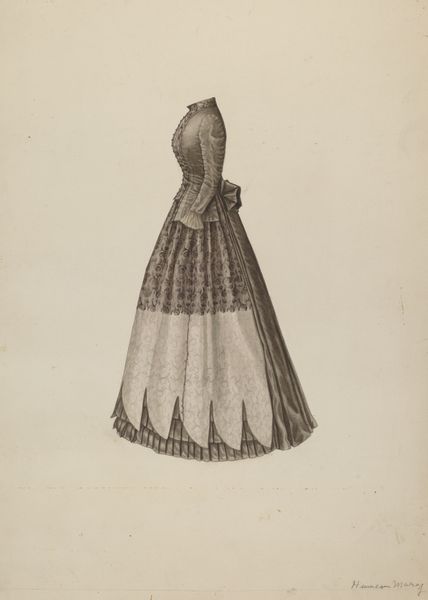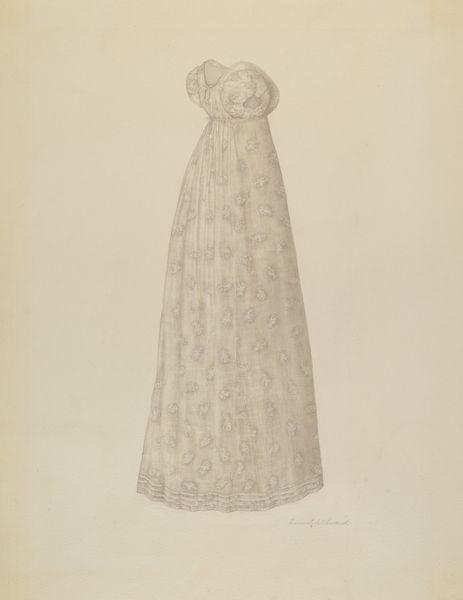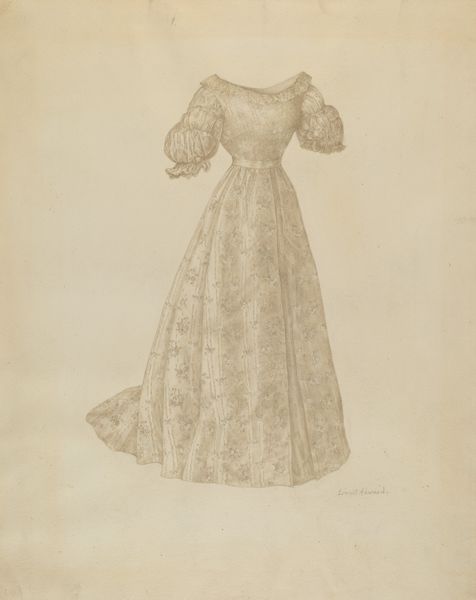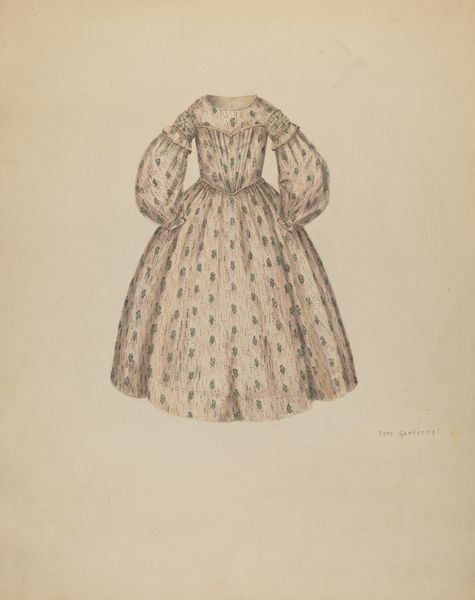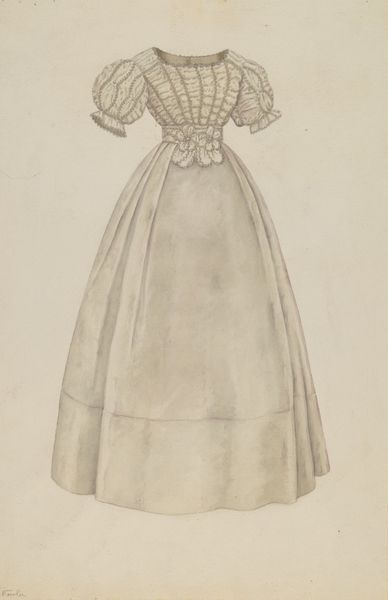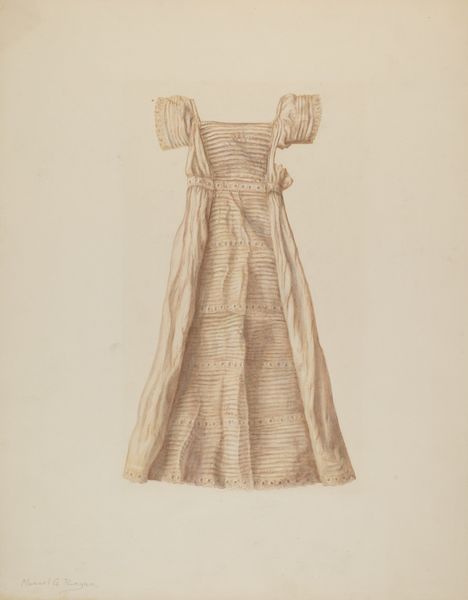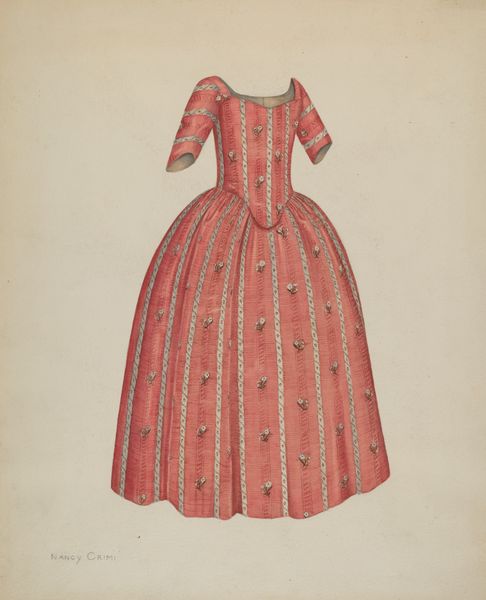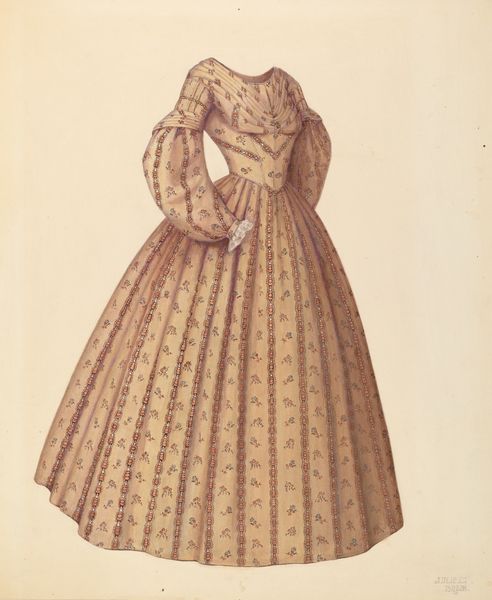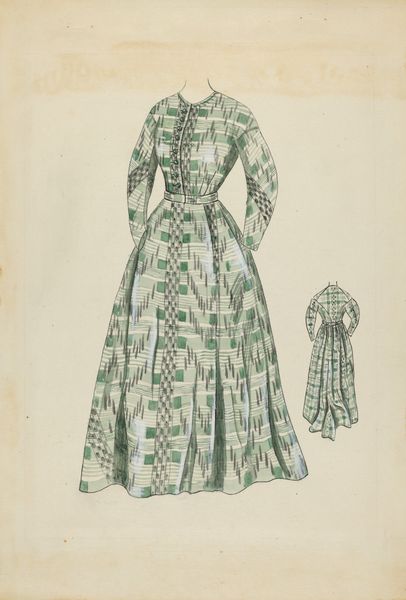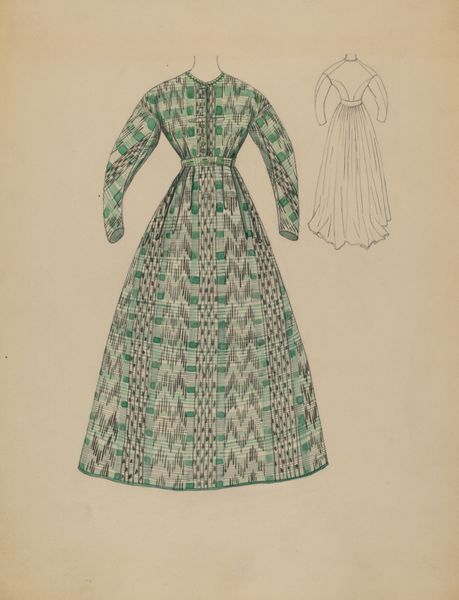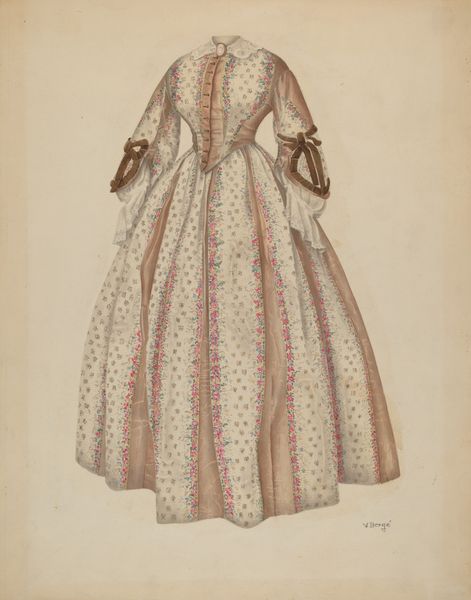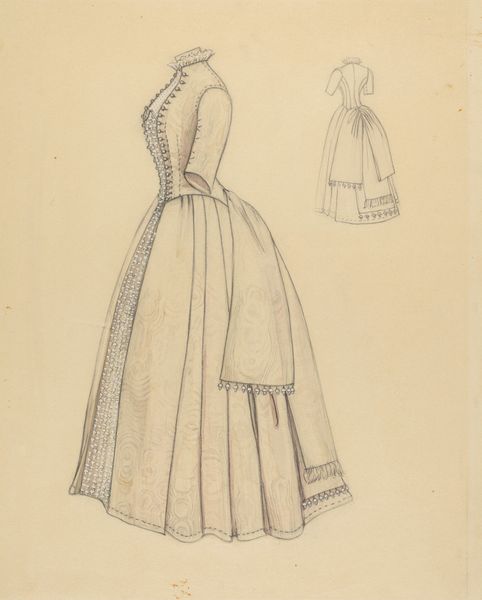
drawing, paper, pencil, graphite
#
drawing
#
paper
#
pencil drawing
#
pencil
#
graphite
#
graphite
Dimensions: overall: 45.5 x 36 cm (17 15/16 x 14 3/16 in.)
Copyright: National Gallery of Art: CC0 1.0
Editor: Here we have Mary E. Humes' "Costume", circa 1941, a drawing rendered in graphite and pencil on paper. There's an ethereal, almost ghostly quality to the garment depicted. What do you see in this piece from a formalist perspective? Curator: The handling of line and value is quite compelling. Note how the artist uses variations in graphite density to articulate the fabric's texture and the fall of light. The repetition of small, dark motifs creates a pattern that defines the shape, a visual rhythm. This is a wonderful investigation of form. Editor: It's interesting how the dress appears to float against the plain background, almost detached from reality. How does this affect the reading of the image? Curator: Indeed. The negative space amplifies the precision of the rendering and reinforces the drawing as an object itself, prioritizing its existence as an autonomous aesthetic arrangement over its representational function. Are you seeing a dialogue between line and shape? Editor: I do. I also notice the tight, almost claustrophobic pleating. Does that enhance the geometric interplay you're mentioning? Curator: Precisely. The controlled manipulation of the graphite medium gives the composition an almost hyper-real quality, a technical demonstration of mastery that overshadows the dress itself. The materiality speaks louder than the subject. Editor: This piece, initially appearing simple, is far more intricate from a formal perspective. It seems the emphasis on artistic technique gives a renewed sense of depth. Curator: Agreed. Paying close attention to the formal elements can reveal unexpected nuances within an image. It provokes a reading beyond the surface.
Comments
No comments
Be the first to comment and join the conversation on the ultimate creative platform.
